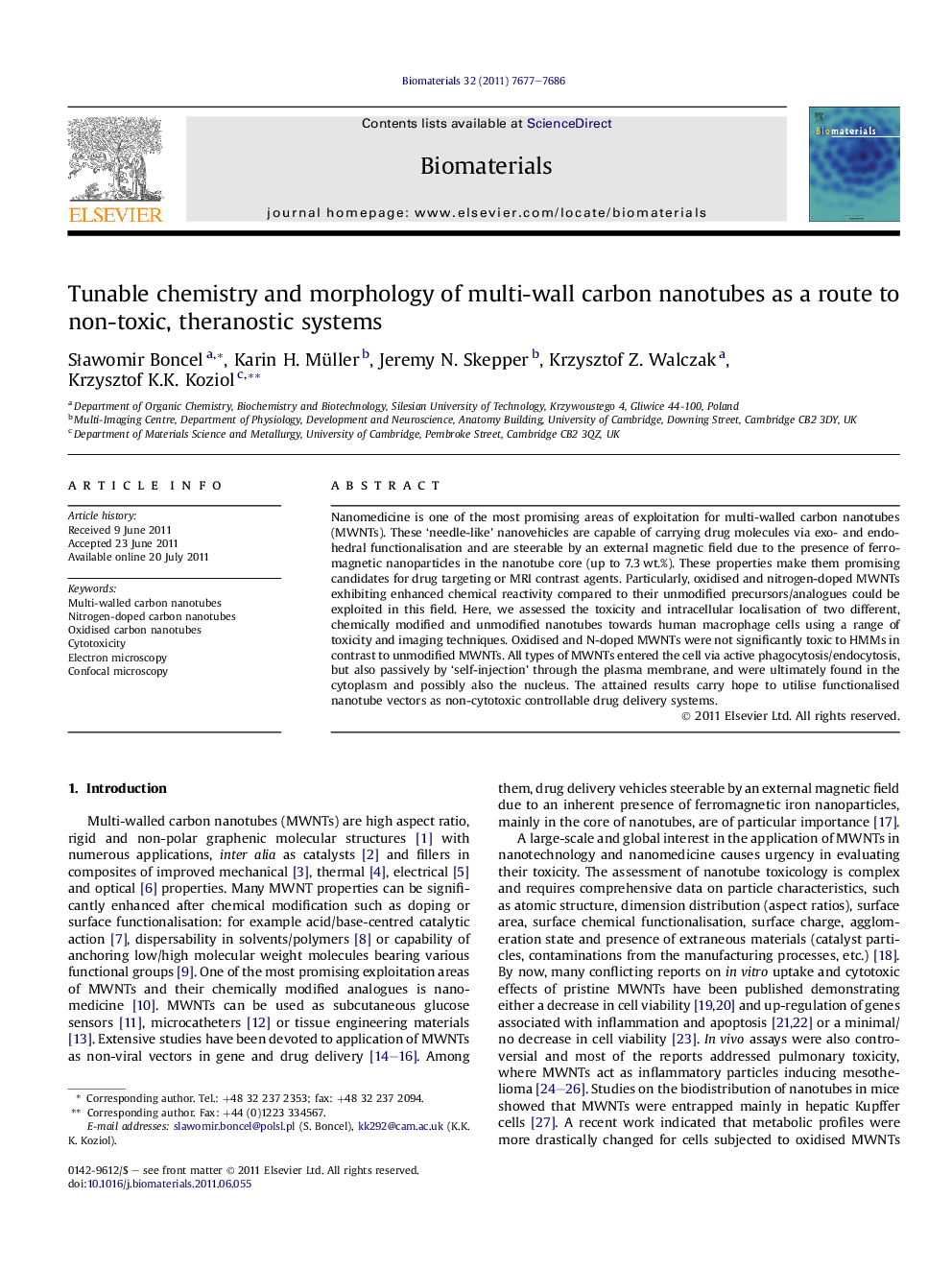| Article ID | Journal | Published Year | Pages | File Type |
|---|---|---|---|---|
| 10229767 | Biomaterials | 2011 | 10 Pages |
Abstract
Nanomedicine is one of the most promising areas of exploitation for multi-walled carbon nanotubes (MWNTs). These 'needle-like' nanovehicles are capable of carrying drug molecules via exo- and endohedral functionalisation and are steerable by an external magnetic field due to the presence of ferromagnetic nanoparticles in the nanotube core (up to 7.3Â wt.%). These properties make them promising candidates for drug targeting or MRI contrast agents. Particularly, oxidised and nitrogen-doped MWNTs exhibiting enhanced chemical reactivity compared to their unmodified precursors/analogues could be exploited in this field. Here, we assessed the toxicity and intracellular localisation of two different, chemically modified and unmodified nanotubes towards human macrophage cells using a range of toxicity and imaging techniques. Oxidised and N-doped MWNTs were not significantly toxic to HMMs in contrast to unmodified MWNTs. All types of MWNTs entered the cell via active phagocytosis/endocytosis, but also passively by 'self-injection' through the plasma membrane, and were ultimately found in the cytoplasm and possibly also the nucleus. The attained results carry hope to utilise functionalised nanotube vectors as non-cytotoxic controllable drug delivery systems.
Keywords
Related Topics
Physical Sciences and Engineering
Chemical Engineering
Bioengineering
Authors
SÅawomir Boncel, Karin H. Müller, Jeremy N. Skepper, Krzysztof Z. Walczak, Krzysztof K.K. Koziol,
